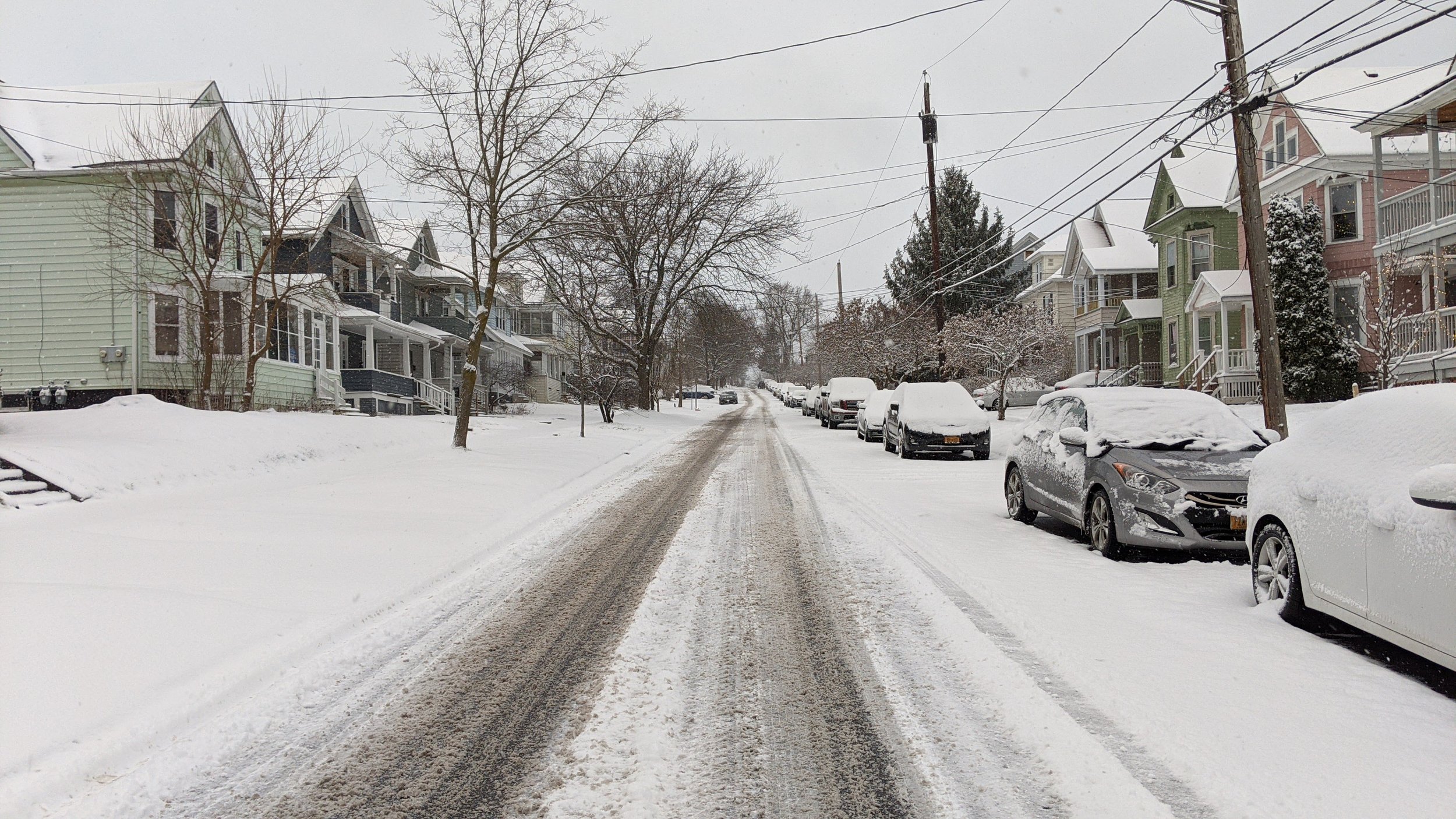One of the things that stands out after a heavy snowfall is just how quiet the whole world becomes. You can hear the gentle crunches of the snow beneath your feet when you walk outside. The first run of the plows breaks the stillness, but they still feel muted. The rest of the world is still waking up and those that are up often choose to stay home until the roads are clear. It’s as if the world is covered in a blanket, resting.
Snow acts as a natural muffle as it absorbs noise, but it is not the only reason these snow days help to quiet a city. By choosing to stay home to avoid the snow covered streets, we help remove one of the biggest audio nuisances around; your car.
We often think of cities as noisy places filled with traffic and construction, but we forget that there are plenty of cities that are snow storm quiet all year round. The one thing they have in common is that they de-prioritize cars in their transportation networks. To see why this policy matters, we first need a quick run down of how decibels are measured.
Decibels are measured logarithmically, which means that if something is 10 decibels louder, it is in fact 10 times louder. If something is 20 decibels louder, it is 100 times louder, and so on. Extended exposures to sounds over 70 decibels can lead to hearing damage.
So let’s take a look at some decibel levels of common occurrences in an urban setting:
Normal conversation: 60 decibels
Busy street: 75-85 decibels
Lawn mower: 94 decibels
Motorcycle: 105 decibels
Car horn: 110 decibels
Ambulance siren: 112 decibels
Diesel truck accelerating: 114 decibels
If you’re driving through a city you may not notice your contribution to this urban noise pollution as cars have become a sort of isolation chamber on wheels, but when you’re walking or riding a bike you notice the increase in noise immediately. Adding more cars on the road also increases the likelihood of emergency vehicles finding themselves stuck in traffic, resulting in prolonged exposures to dangerous decibel levels for everyone outside of a car.
Cities don’t have to be this way. Cities in the Netherlands are dramatically quieter than their American counterparts, primarily due to their transportation policies. By emphasizing pedestrians, cyclists, and public transit while slowing down the private cars that are in use help reduce the amount of noise pollution on an average city street. You can see this in more detail in the video below by Not Just Bikes on YouTube.
While larger changes to our transportation network may take time, there are plenty of things we can do now to start the transition and bring down the noise.
Street trees and other urban vegetation help to absorb sound. They have also been shown to slow down vehicles by visually confining the space, forcing drivers to increase their attentiveness. On top of all of that, they make walking a much more pleasant experience by providing shade, cover from rain, and a visually interesting journey. Cities should ensure that all street and sidewalk improvements are coupled with an evaluation of their street tree canopy.
Prioritize clearing sidewalks and bike paths during winter storms to encourage their usage. Walking through the snow can be a challenge for many people, especially if it’s deeper than a couple inches. Cities like Syracuse and Rochester, NY are making serious strides when it comes to clearing sidewalks during the winter, but they still play second fiddle to the roadway clearing programs these cities have had in place for the better part of a century. If we begin elevating sidewalks and bike lanes to the same level as vehicle lanes, we may get closer to the Finnish ideal of prioritizing the most efficient forms of transportation over personal vehicles.
We might not want to be stuck in a snow globe all year round, but there’s no reason our cities can’t get closer to the peace and quiet we hear during those early winter mornings. Quiet cities let us enjoy the little things just a bit more.
About 27 percent of Syracuse is covered by tree canopy, which is below average for cities east of the Mississippi River.






